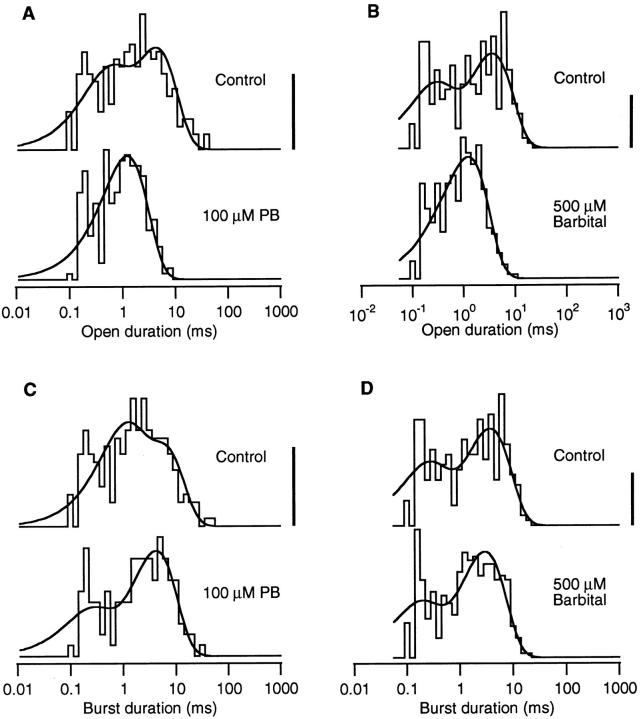Figure 3.
Open and burst duration histograms compiled from the same two experiments exemplified in Figs. 1 and 2. The open duration histogram normally has two components. In the presence of either barbiturate, the open histogram collapses to a single component with an intermediate duration. The burst duration histograms contain two components under control and with exposure to barbiturate. There is very little difference between the control and barbiturate burst duration histograms. The vertical calibration bar represents 10 events in control (linear scale), see below for vertical scaling of barbiturate histograms. 0.2 μM ACh, −100 mV. (A) Open durations. Control: 226 events, τfast = 0.48 ms (.35), τslow = 4.9 ms. 100 μM PB: 251 events, τ = 1.3 ms, calibration bar = 14 events. (B) Open durations. Control: 304 events, τfast = 0.26 ms (.34), τslow = 4.1 ms. 500 μM Barb: 723 events, τ = 1.2 ms, calibration bar = 25 events. (C) Burst durations. Control: 212 events, 1.07 openings per burst, τfast = 0.96 ms (.46), τslow = 6.3 ms. 100 μM PB: 136 events, 1.85 openings per burst, τfast = 0.21 ms (.25), τslow = 4.7 ms, calibration bar = 7 events. (D) Burst durations. Control: 294 events, 1.03 openings per burst, τfast = 0.23 ms (.33), τslow = 4.2 ms. 500 μM Barb: 380 events, 1.90 openings per burst, τfast = 0.16 ms (.28), τslow = 3.3 ms, calibration bar = 13 events.

